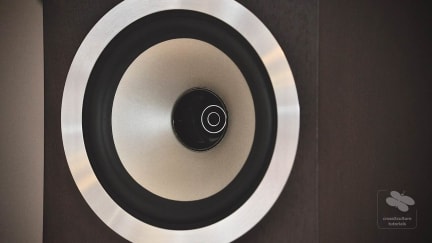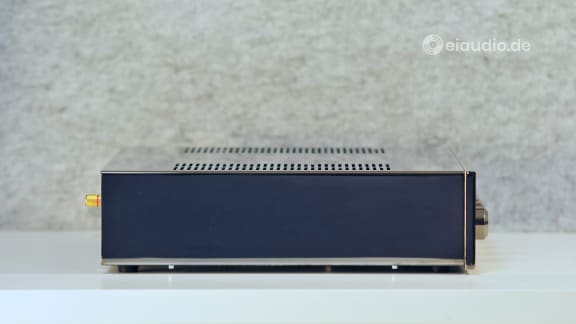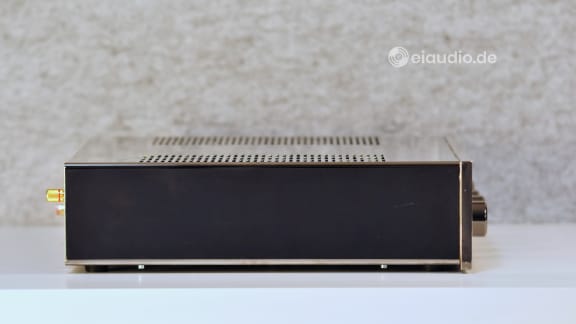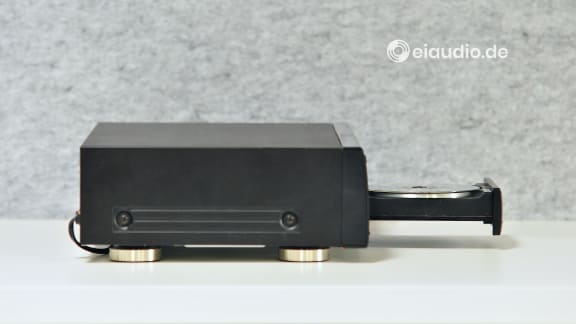Explorations in Audio
In 'Explorations in Audio' I aim to share some practical insights on setting up and optimising an affordable HiFi system. Although one would think that, really, all has been said about HiFi, some surprisingly simple questions still remain, e.g.: 'Is digital superior to analogue?' 'Do cables matter?' 'Can digital cables pick up interference?' 'Should speakers be placed on spikes?' 'Has evolution in HiFi made older gear obsolete?' 'Where should I place my sub?' 'Which room correction works best?' - On the other hand: 'Are these really the right questions?' - We shall see.
What's new in eiaudio?
While the entries in this blog are divided into the three distinct categories above, you will find a mixed listing of the most recent postings below. The most recent article is shown first. If this is not your first time visiting, the listing below is a good place to quickly check if anything is new.
Your input is more than welcome, as long as you follow the basic audiophile rule of ‘ear over mind’. This means that you do not comment based on what you think you know, but only on the basis of your own listening experience. Please feel free to suggest gear for testing as well as leave comments on the descriptions provided here.
Symphonic Line RG2 MK3

Watch this space. Review in progress. Full report coming up.

32. Acoustic Room Treatment
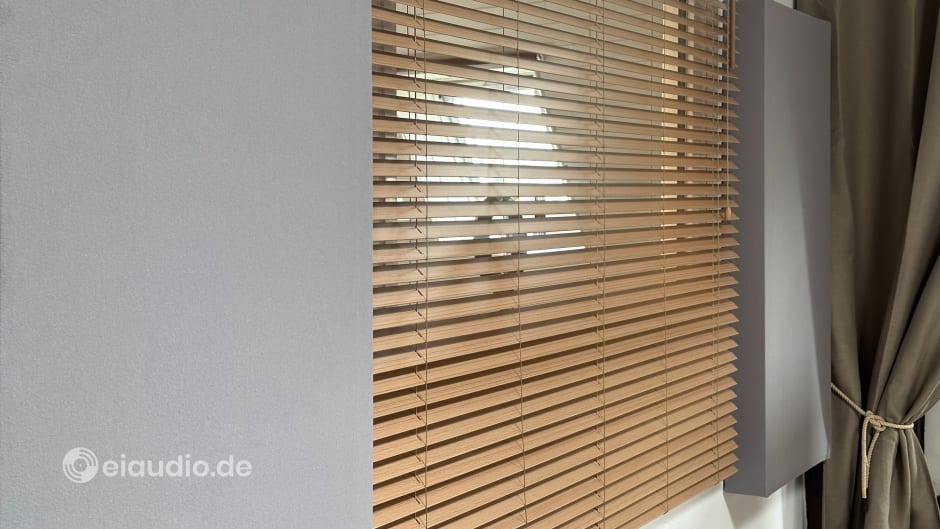
Watch this space. Full review coming up.
Symphonic Line RG9 MK3

Introduction to High End
I would like to begin this journey of discovery with a simple question: “What is High End?” In recent years, the term has become quite inflationary in the context of audio equipment, with private sellers and shops offering ‘High End’ products both at the budget and at the luxury end of the audio market. Perhaps such claims are valid, and perhaps they are not. But who is to decide this if we are still unsure of the definition? Perhaps one way of answering the initial question is to look at the origin of the term in HiFi and at what it meant to the people who coined it and first used it for their products.
In America, it was the Audio Research Corporation (ARC) who especially referred to their large tube power amplifiers as High End products. And in Germany, the term was taken up by Rolf Gemein’s Symphonic Line, Ulrich Rahe of the famous RABox, and Dieter Burmester who runs the now internationally renowned audio company by that same name. Together, they founded the ‘Deutsche High End Society’ and were among the initiators of the High End trade fair in Munich, which is the largest High End audio fair in the world today. Both Gemein and Burmester set out to create audio devices that were originally not geared for the mass market (a competitive environment in which their products would be scrutinised in terms of shipping and production costs for the sake of profitability) but instead focused on creating the highest quality circuits and combining the best possible components to reach the maximum in terms of sound.
When you pair long development times with exceptional engineering skills and high quality components, this inevitably becomes costly. And most manufacturers are worried that they will not be able to generate enough demand for their products in this high price range. In consequence, most products are designed to perform at their best within a given price bracket. I was once part of a discussion in which the engineering team of a TV manufacturer had just finished designing the audio section of a new television model. The internal purchase price for the components was quoted at 35 EUR. Upon this, the team was informed that they had a budget of 7.50 EUR and was asked to rework the design and talk to their suppliers. Such choices are in fact very real, and, in the described scenario, the acoustic components were to be designed for a television set in the higher-priced premium segment and not some cheap entry-level product.
While most successful companies see their development and production departments as part of their costs and are trying hard to keep these as small as possible, both Rolf Gemein and Dieter Burmester gave their product philosophy priority over all other considerations, thus creating a utopia in which the forces of the market—forces that apply to everyone else—appeared to have no effect. In this sense, High End means true devotion to the cause from the side of the manufacturer, until the product is completed. And finally, primarily due to their higher price tag, High End products can only exist where enthusiasts recognise the extra effort and are willing to pay the higher price.
Having said that, not everything that has a high price tag can also be considered High End. This makes it difficult for customers to determine where exactly High End starts (and is actually worth the investment) and where it is just a term used to pedal HiFi gear for the sake of higher profit margins. Therefore, when a friend (and invaluable supporter during the building phase of our listening room) suggested that I contact Heinz-Peter Völkel and ask him to send me some Symphonic Line products for testing, I was unsure of what to expect. After all, I had set up my HiFi systems with great care using selected industry classics. I had just finished construction on our listening room and had installed new acoustic absorbers. I was indeed very happy with the resulting sound. What more could I possibly say about Symphonic Line products other than simply reiterating the fact that they, too, sounded great?
Seeing that I was not yet convinced, Heinz-Peter suggested that we should meet at the Norddeutsche HiFi Tage trade fair in Hamburg where Symphonic Line had booked an unpretentiously small room on the third floor. As I walked in, I found Heinz-Peter and Rolf Gemein taking turns at presenting the Symphonic Line products with various music. Having spent some hours at the fair listening to different HiFi setups, I found the choice of music at their booth refreshing and the Symphonic Line setup sober and sophisticated. This was more than many of the other booths had been able to deliver, and, for the first time, I had the very real sensation that this company’s products could indeed be worth exploring. Later that week, Heinz-Peter and I talked about where to best start our journey of exploration. We soon agreed that it could be educational for the blog to get to know the products from the start. And thus, we begin or story with an RG9 MK3 from around 1994.
An Elusive Beast
It seems chrome-plated Aranja (or grape fruit) was among the most fashionable colours on High End products back in the day, and the RG9 boasts this shiny surface on a chassis made of a bent brass alloy that is 2mm thick and has a 10mm face plate. In other words, this amplifier feels very solid and is quite heavy. In the household environment, its surface will act as a tinted mirror, giving the RG9 a chameleon-like presence that makes it more visible from some angles and less visible from others. In the studio, however, I attempted to minimise all reflections in order to better show its exact features and dimensions. In doing so, I also revealed some of the stains and wounds that it had collected over its 30-year lifetime. During daily operation, these would hardly be noticeable because you would hardly ever see past the mirror effect. Except for these photos, the body of the RG9 in Aranja is hard to catch.
The Symphonic Line logo, the RG9 MKIII model name, and the labels of the controls are all engraved on the face plate. As a first-time user, I sometimes found these labels difficult to read, especially when operating the unit in low-light conditions. I also noticed that the position of the rotary knobs is not easy to determine. With three rotary knobs of equal size, colour, and design, it was probably best to memorise the functions of each control until one could use them intuitively. Moving from left to right, the first knob is actually a rotary switch that turns the RG9 on and off without any audible switching noise on the speakers. The next button to the right is the input selector that changes between sources, again without audible noise. The third knob switches between the Tape Monitor and the Line signal.
The volume control is the fourth and final knob in this row and sets itself apart due to its superior size. Upon first turning it, I was a little disappointed that this was not a stepped attenuator and that it was instead smooth and easy to move. I have since read that it is a double-mono design and of high quality, however, I personally prefer stepped attenuators, because they help me remember listening volumes in increments. For instance, I usually turn the volume down by two steps when changing from Phono to CD on my Restek V1 preamplifier. Such helpful points of reference are missing on the RG9 dial. On the positive side, the rear panel of the RG9 is far easier to access than on the Restek. All Chinch/RCA sockets are easy to reach and have sufficient space between them to accommodate most HiFi and High End cables.
There are two pairs of Chinch/RCA sockets available for phono, of which one pair can be used to increase the input capacitance by means of adaptor plugs. There is also a switch on the back panel to accommodate for MM and MC cartridges. This switch had me worried for a moment, as, upon first trying, it did not want to activate the setting for MM. It seems the RG9 had been used exclusively with MC cartridges for many years and the circuit had become stuck in this position. This is a common issue with relays that are left unused over longer periods of time, no matter how well they are built. However, I was not about to give up easily. After some further attempts of toggling the switch, the internal relay audibly clicked into position with MM engaged.
The rotary clamp to connect the ground wire is sufficiently large and near the phono input. That is indeed practical when pairing the RG9 with vintage turntables that have a fixed phono cable and ground wire. There is one stereo set of WBT terminals available for connecting the amplifier with the loudspeakers. They take banana plugs as well as bare wire or spades. All inputs and outputs, including the rotary clamp for the ground wire, are 24K gold-plated. As on our Restek, the back wall of the RG9 bends inward ever so slightly in combination with very tight-sitting plugs. I do not really like this impression on either occasion and would have preferred the otherwise sturdy rear panel to find some support on the amplifier’s top lid.
Although it might not look as monumental when perched on a HiFi rack, moving the amplifier around is a reminder of the high quality materials that went into its production. At a round 18kg, the task of simply setting it down on a table or in a rack proves to be a small challenge. As can be seen on the photos, the original feet are not very tall. This makes it difficult to squeeze the fingers underneath the amplifier for lifting and again a challenge when setting it back down. I would have wished for the feet to be at least high enough in order not to get my fingers pinched while rearranging the system. I have sometimes heard it said that High End audio products and the concept of convenience tend to be mutually exclusive, and I think I have by now gathered sufficient evidence in this report to prove that this is not an unfounded observation. But then sports cars are not really convenient either, but very, very sexy.
Down to Earth Listening
For the start of my listening explorations, I had four HiFi setups to choose from. I weighed the pros and cons of each of them and ultimately decided to get to know the RG9 on the least complex system of them all. On this, the music sources were a Philips GA 212 turntable fitted with an entry level AT VM95 E cartridge, as well as a Pioneer PD-S604 CD player that recently had been upgraded with an anti-resonant coating on the inside of its enclosure as to further stabilise the already quite remarkable drive unit. Both devices were rather musical for their class but they were by no means High End. They were connected to the RG9 by means of Silver Solid-Core chinch/RCA interconnects of the HBS4-Type shown in this forum.
The loudspeakers were American built Epicure EPI 500 with 10-inch woofers and two 12-inch passive radiators per speaker. They, too, were rather musical despite showing a measurable dip between the woofer and the passive diaphragms. Ground potential between the devices had been harmonised and the speakers had been positioned in the large studio as to present the most possible linear performance. As usual, I used the acoustic calculation sheets handed to me by Peter Englisch to determine their basic positions and then proceeded to set up the remaining centimetres by hand, or rather, by ear. Finally, the exact matching of the stereo channels had been conducted using a laser distance gauge. No signal wires or power cables were crossing or even touching behind the rack. The electric mains was fed from the fuse box straight to the system for extra low interference.
Based on my standard components, a small Rotel preamp with improved Faraday cage (not a difficult upgrade, if you take into account that the original floor plate was made of plastic) and Becker MOSFET amp, I already had spot-on centre stage imaging, seamless panning from left to right, tonal accuracy and believability. In short, there was little on my original setup that troubled my ears, stuck out to me or was obviously missing. The Becker amp’s strengths were its enormous capacitors of 64,000 mF each and its four Hitachi MOSFET J49 output transistors. Its weaknesses were pretty much everywhere else, from its flimsy transformer to its haphazard wiring, and it sometimes amazed me that I could find such deep affection for this little hand-made amplifier at all.
Switching over to the RG9 MK3, I kept our Audioplan PowerCord S and the Belden 9497 speaker wires in place. I knew the PowerCord S to be a well-engineered cord of symmetrical anti-resonant design, and the Belden cables had repeatedly proven themselves to be an excellent match for vintage speakers. My reason for doing so was not to introduce more than one new component at the time. I powered up the system, put on a CD and left the room for the next 30 minutes. When I walked back in later, I was greeted by a calm and sophisticated sound. I sat down in my armchair to listen and was deeply impressed with this system’s tonally warm storytelling. I especially enjoyed the breadth and width of tonal colours that are capable of connecting music with memories.
Gone were the few ramaining traces of static flicker, sibilance, and haze of the Rotel Becker combo. In their place, there was ample room for the nuances of piano, strings, and wind instruments. In addition to a more distinct separation of tonal events, the RG9’s superior power per channel held a tighter grip on the EPI 500’s bass lines. In this combo, there were simply more bass nuances and more texture. The presentation was brought forth with great assurance. Like an artist painting with a big brush, it was at once insightful and bold. This is not to say that the RG9 would show its audiophile qualities on every single record. Where the recordings had their limits, the system still showed this quite clearly. In this sense, the music did not seem ‘sounded’ in any way. Instead, each music event was presented with good measure and in a down-to-earth manner.
Real-World Impressions
Till Brönner’s song “A distant Episode” highlighted the impressively precise 3D imaging of the Pioneer CD player’s platter drive mechanism in combination with Legato Link. Patrick Kelly’s live concert performance of “A Litte Faith” revealed formidable lower bass extension and quick rise times of the amplifier. The same cannot be said of his song “Land of Bliss” that did not undergo the same positive transformation. Peggy Lee’s “Fever” showed splendid attack and decay paired with a formidable differentiation between drum materials, tensions, techniques, and dynamics. Cristin Claas’s song “In the Shadow Of Your Words” served to reveal the multiple tonal colours of vocals, nylon and steel strings, and of the synthesiser. Although the music events often coincided, the RG9 managed to keep them separate and in good order and proportion throughout the performance.
Sean Heel’s album “A Dry Scary Blue” can be superbly insightful with occasional moments of unpleasant clipping. However, on the RG9, it sounded a bit more compact and less airy than I was used to. Then again, Jörg Hegemann’s much praised album “High End Boogie Woogie” sounded full and engaging. On Jörg’s album, Paul G. Ulrich’s double bass was rendered razor sharp and wonderfully separate from the piano. Gurgling low bass notes maintained more refinement than usual with a discernible metallic ringing and rasping to them. I had never before experienced the Steinway grandpiano’s nuances so separately, for instance on the song “When you and I were young, Maggie”. And I do remember it well from standing next to it during parts of the recording.
Switching to phono, the Helge Lien Trio’s album “Badgers and Other Beings” sounded spacious and open and at the same time intimate and warm. In addition to the usual panning from left to right, the stage felt more seamless and deeper. In my setup the phono section was of very low noise and tonally insightful. Instrument separation was maintained during fast, loud, and crowded passages. Having spent some time listening, I could sense that the only limiting factors were the speakers and the entry-level Audio-Technika cartridge. I was eager to find out how the RG9 would perform in combination more translucent gear that was positioned higher up in the food chain.
Higher Up the Food Chain
Our second test environment consisted of a Marantz CD-17 CD player, a Thorens TD 320 turntable paired with Audio-Technica VM95 ML cartridge, both connected via Silver-Solid Core to the RG9-MK3, and Martin Logan SL3 electrostatic speakers that were connected to the amplifier in the from of Y-wiring. On hybrid speakers, this way of wiring had the advantage that both the electrostatic panel and the dynamic bass driver of the SL3 could be addressed separately for improved back-current handling but found a uniform point of contact on the side of the amplifier to preserve homogeneity.
In this new position, the RG9 MK3 was to replace an RGR Model 4 preamplifier that was paired with a B&K ST140 solid state amplifier. This was a decent-sounding combo capable of delicate tunes and insightful presentations. With its still rather modest 105 Watts per channel, the ST140 was at times a little weak in the chest for the SL3 despite its high current-handling capabilities.
I began listening via the Marantz CD-17 and immediately noticed that the music sounded more seamless and the soundstage more consolidated. As electrostatic speakers radiate both towards the front and to the back, perfect timing is essential for the speakers to disappear in the room. In my usual RGR/B&K setup, stage imaging often did not feel quite right in the transition zone between the left speaker and the left section of the stage so that some instruments or notes would jump forward in an unnatural fashion. This effect reduced by a large portion, with the music wrapping around the speakers from the far left to the far right. Woofer integration was also improved and made faster music more fun to listen to.
Switching over to phono, I was pleasantly surprised not to experience the drop in dynamics that is all too often the case. In this system I was using the original Symphonic Line power chord and was impressed with its contribution to the performance, especially in comparison with our cheaper Lapp Ölflex that I had quickly replaced after just a few minutes of listening. The ability of a power cord to make or break a system still amazes me each time I hear it.
After listening to the Helge Lien Trio’s album “Guzuguzu” which portrayed lots of musical insights as well as dynamics, I changed over to Manu Katché’s album “Neighbourhood”. On his song Katché’s “Rose”, in particular, I was perplexed by the fact that I had never before been able to identify the two separate saxes performing the chorus side by side as distinctly as with the RG9.
The Pain of Parting
I am not sure if you remember moments from your early adulthood when the party at your house was over, and as you were watching your guests leave, it slowly dawned on you that the house would again be empty and that you were left to deal with the emotional and physical aftermath on your own? At such moments, it suddenly became painfully obvious that adjusting back to life as usual would require some time and effort. The head still buzzing from all-new impressions, I had to think of my HiFi friend Luigi’s words: “Once you have heard it, going back won’t feel the same.”
Changing back to our Rotel & Becker combo, much of the tonal width and fullness that I had since come to accept as normal was gone. The sound became lighter and sharper, displaying slightly compressed mids. What had not troubled me at all and initially seemed to be little more than an upgrade had since become an essential property of the music to me. In my impression, not enough has been said about the weight of tonal width in music. While most HiFi talk still fusses about dynamics, bass performance, or high resolution files, etc., the one element that addresses our emotions and has the power to lead us back in memory is correct tonality. And, according to my short experience, Rolf Gemein understands how to play that card well.
Specifications
- Type: Integrated solid state stereo amplifier
- Transformer: 430 VA, toroidal with mumetal enclosure
- Output power (RMS, 8 Ohms): 2x 140 Watts
- Output power (RMS, 4 Ohms): 2x 250 Watts
- High current stability: > 2 Ohms
- Phono section: MM/MC with adaptable capacitance
- Number of line inputs: 3 + Tape loop
- Country of Manufacture: Germany
- Dimensions: (W) 450mm x (H) 100mm x (D) 380mm
- Weight: 18kg
- Year(s): 1994 - 1998
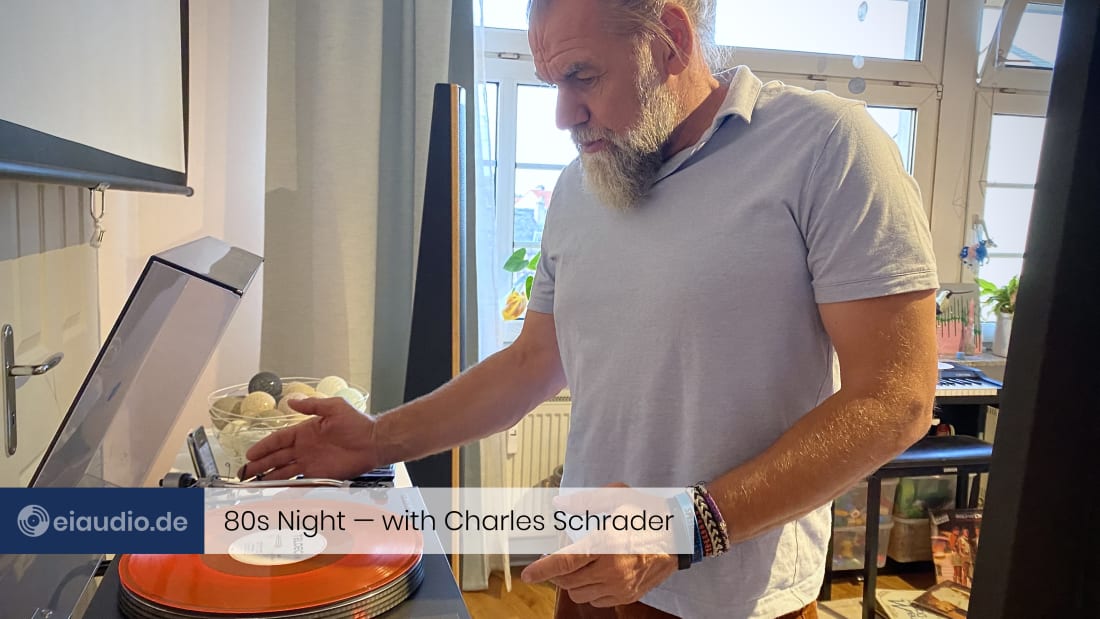
Pioneer PD-S604
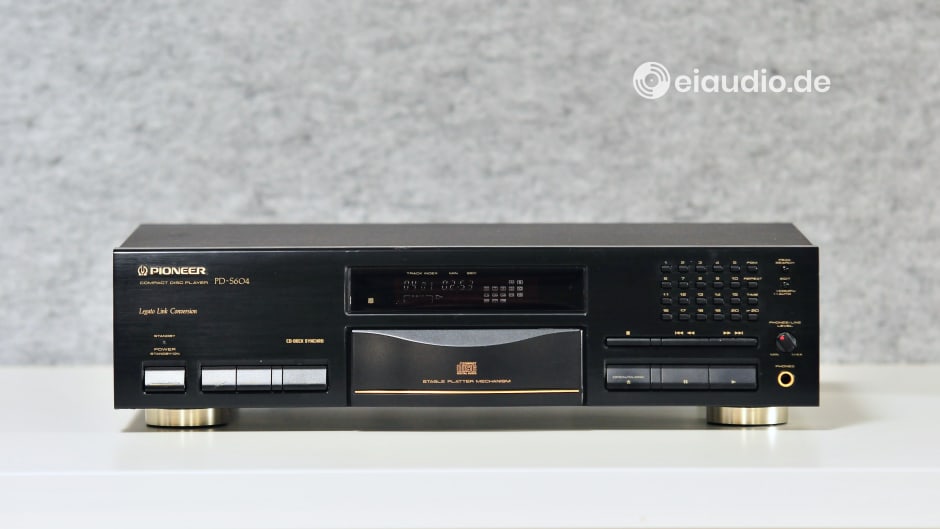
I came across our specimen of Pioneer’s 1995 budget CD player PD-S604 while looking for an affordable replacement for our trusted Sony CDP-502ES on which the original laser unit had begun to fail. Replacement lasers for the 30-year-old Sony had been out of production for some time, and the sources I was aware of had either sold their last stock or had since become ridiculously expensive. The Pioneer was by no means on the same technical level as the Sony, however, it did have a 10-year advantage as far as our understanding of laser technology is concerned, and, like the Sony, it was built at a time when decent HiFi still mattered. The PD-S604 ranked between the lower PD-S504 and the higher-specced PD-S904 in Pioneer’s price-conscious consumer range. As such, it was no match for the fully-specced PD-S06 that came out in 1997 and weighed around 10kg, however, at just over three kilograms, the PD-S604 already offered much of the same technology.
What attracted me to the Pioneer players of this time was their patented Stable Platter mechanism which firmly holds the CD in upside-down position on a revolving platter. In this constellation, the laser reads the disc from above, finding a nearly perfect focus plane each time. On most rival mechanisms, the CD will unavoidably wobble slightly, thereby requiring constant focus and error corrections from the mechanism itself and from the software. A further benefit of the laser positioned above the disc was the superior dust protection of the optical lens. Dust particles in the room are less likely to ‘settle’ under a suspended laser than they are on a laser that sits beneath the disk. Following the old HiFi principle of “garbage in, garbage out”, the output quality greatly depends on the integrity of the early signals in the chain. Having spent years of critical listening, I have become more aware of the audible effects on music shortly before a laser starts to skip. Thinning bass output and increased sharpness of the treble are the most obvious side effects.
There is a fine line between consciously detectable noise and the kind of subconscious noise that simply makes us think less favourably of a product without the reasons being quite clear to us. The PD-S604 promised to eliminate such noise on at least two levels: Via the Stable Platter drive mechanism described above and via an upsampling feature called Legato Link. The CD’s Red Book standard supports 2-channel stereo at 16 Bit & 44.1 kHz allowing for frequencies up to 20,000 Hz. While this is also considered to be the upper end of human hearing, the sound spectrum of natural music does not end there. Vinyl LPs allow turntables to naturally attenuate higher frequencies through the limiting physical properties of the needle, thus creating a smoother fade-out. CD players, however, cut off the upper spectrum by means of filters. This way of handling the high frequencies is said to give CDs a sharper and less tonally pleasant top-end. This circumstance is often quoted among the reasons for some audiophiles to prefer turntables.
Legato Link promised to process high frequency information in a more delicate manner by using spline interpolation to recalculate the missing original waveform. Pioneer’s Legato Link was among the first digital filters using spline interpolation to pass through superior transient information, however, this did not come without side-effects and could at times leave behind some unpleasant modulation at higher frequencies. It has sometimes been said that on well recorded CDs Legato Link did work its magic, but on some recordings, the algorithm seemed to be at a loss and added information that more resembled distortion than music material. I had to find out for myself how these claims would play out in real life and decided that the PD-S604 offered the best value for money of the range. Both the PD-S904 and the PD-S06 offered a digital cinch/RCA output which the PD-S604 did not have. However, since I wanted to listen to the player by itself without the use of an external DAC, I could live with its existing features.
The original owner of the PD-S604 reported that he had been more than happy with the player’s features and sound as well. He said that it sounded superior to all the players he had owned since and that his reason for selling had more to do with the family’s sleek new audio rack that offered room for a single combined CD/DVD unit only. Upon my arrival, I found the Pioneer perched on the dining room table with some old headphones attached for demonstration. The resulting sound was mediocre at best, and so I could only test if the player was basically functional and decided I would give it a more thorough inspection at home. When I left the house of the seller, I promised that I would make his player famous by presenting it on the eiaudio blog and invited him for a visit if he should ever be in Marne. When I arrived home that night, I gave our Sony CDP-502ES one final listen and then set up the Pioneer in its place. I would test my luck with having the Sony repaired once again, but I understood that this would take some months.
With its functional but not exactly audiophile power cord connected, the PD-S604 instantly went into standby. This was a welcome feature for me, because it meant that I could rouse it from its sleep via remote control. In fact, CD players were often the only audio devices in my setups to offer the luxury of remote operation at all. OK, to offer true luxury, the layout of the remote control (CU-PD045) might have been better arranged. The Power button, the Numeric Keys for the title selection, and the Play, Pause, and Stop buttons were all of equal size and integrated within a uniform grid of buttons. This made nighttime operation a real nightmare. And the controls on the front of the player were not without quirks, either. While Numeric Keys on the front of the player made it easy to begin playback from a given title, the placement of controls here was also quite counterintuitive. The Stop button, for instance, was placed in a different row than Play & Pause, which were positioned next to the button to Open/Close the tray. I wonder how many times this player has been opened by mistake in an effort to stop the CD from playing.
On some CD players using a single power supply for the digital and analog section (e.g. Denon DCD-1420) turning off the display will lead to a cleaner sound by removing some of the digital haze. However, turning off the LCD display on the PD-S604 simply turns on a red LCD display message saying that the CD display is currently turned off. Therefore, perhaps unsurprisingly, I was unable to detect an acoustic benefit in turning the display off. Perhaps another such quirk is that the motor-driven headphones volume attenuator also affects the variable line-out volume. In audiophile listening, we attempt to reduce the number of controls and attenuators in the signal path and mostly give preference to the fixed line output. However, users who prefer the variable option may well find it a nuisance to have the two features connected. The headphone amplifier itself is a bit weak and will only sound decent with low impedance headphones made for laptops or other portable devices. Audiophile 300 Ohms would quickly drive this headphone amplifier to its limits.
I connected the Pioneer to our upgraded Rotel preamplifier with Becker ST-200 MOSFET amplifier using HBS2 silver solid core wires. The Rotel-Becker combination is generally more musical than analytical, it sounds rather enjoyable and is tonally rich rather than bland sounding. When paired with our Epicure EPI 500 loudspeakers, the combo is ideal for relaxed nighttime cruises and a great companion for hours of effortless listening. I found the PD-S604 to blend in well here. The Becker amplifier provides a good sense of order with most music choices, and the Pioneer enhanced this impression adding even more depth to the soundstage. On many occasions, I felt that the music was positioned in a perfect round circle spanning from my ears to the speakers and beyond. I appreciated the fact that with the PD-S604 the music did not lose any of the intimacy that I was used to from this amplifier to speaker combo.
Reading the disc with great accuracy and refining the top-end with Legato Link proved to be beneficial to most recordings of natural instruments as they are found in Jazz, Blues, Singer-Songwriter, Classical Music, and other handmade materials. One some recordings, however, it seemed that the high-frequency algorithm had some difficulty discerning music content from distortion and served to amplify this noise in a manner that I had not heard from other players. These artefacts could span from pure pink noise distortion to genuine background occurrences that remained hidden on other players. On one instance, the music material repeatedly changed from muffled to transparent as if the player could not make up its mind how to best handle the high frequency roll off. On the other hand, I must confess that I have not yet heard a CD player on which all recordings sound equally well. Suffice it to say that on some recordings the treble could be more accurate and better integrated.
There is one small upgrade I could not stop myself from adding: While taking the photos for the website, I noticed how unusually light the player felt. With its disk platter ejected, one might worry that it might fall over. I therefore added a sheet of anti-resonant coating to the inside of the cabinet (see last photo). Doing so added some 500 grams to the unit and served to reduce drive vibrations on the chassis which in turn led to an even more ordered sound. I once saw this method applied from factory on the Denon DCD 1500 II and rather liked the idea as a quick fix to mechanic issues. CD-players greatly benefit from a firm stand and lots of body weight to quiet their moving parts. A small tweak with audible effect.
Adding the anti-resonant coating, I noticed another small issue with the player. On some recordings there seemed to be a slight lack of forward drive. The player could sound a bit slow on occasion, especially when the music got faster. It is well possible that this effect was further highlighted in combination with the Becker amp that would at times display a similar tendency. The impression never stayed for long, but it was noteworthy enough for me to mention it here. Fans of faster music might want to take this into consideration or at least test the player with their material to first see if it works for them. On the music that I listen to, the occasional loss of momentum never troubled me a bit.
In its current state, I am indeed very satisfied with my purchase and enjoy the warm and pleasant sound of the PD-S604. There is sufficient bass presence to make instruments sound real and well-rounded. The Pioneer’s superior sense of order and its generous spacing of instruments are attractive features for the recreation of natural instrument recordings. In my experience, the musical benefits of Legato Link far outweigh the few instances in which it does not work so well. All in all, the PD-S604 has grown on me more than our Sony ever had. The better the music material is recorded, the better this player can show what it can do.
What experiences have you encountered with this player? At the time of writing this, there was not much information on this Pioneer player to be found on the web. Click on the header picture to activate commenting and be sure to share your personal experience with us.
Specifications:
- Type: Stable Patter mechanism CD player
- Power requirements: AC 220 - 240 V, 50/60 Hz
- Digital converter: PD2029A
- CD Mechanism: PEA1179
- Frequency response: 2 Hz - 20,000 Hz
- Signal to noise ratio: > 108 dB
- Dynamic range: > 96 dB
- Total harmonic distortion: < 0.0028%
- Line output voltage (max.): 2 V
- Wow and flutter: < 0.001% (below measurable)
- Number of channels: 2-channel (stereo)
- Variable line output (stereo): 1x cinch/RCA
- Fixed line output (stereo): 1x cinch/RCA
- Digital output (stereo): 1x optical
- Accessory jack: CD-Deck synchro to tape
- Headphone jack: motor drive volume control
- Accessories: remote control unit
- Remote batteries: 2x AAA
- Power consumption: 15 Watts
- Operating temperature: +5 to + 35 C
- Dimensions: (W) 420mm, (D) 286mm, (H) 110mm
- Product weight: 3.9 kg
- Country of Manufacture: Japan
- Year(s): 1995 - 1996

31. Understanding Room Acoustics
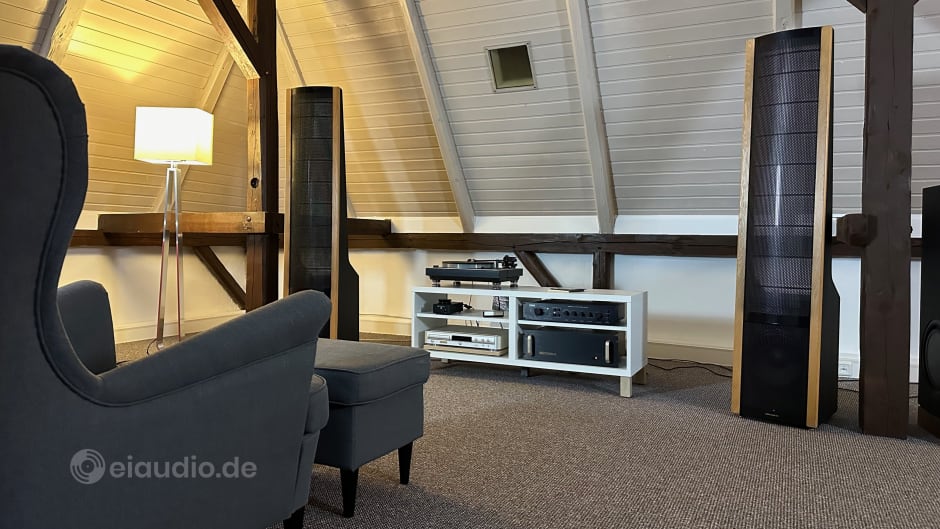
Often, even before we listen to a classical instrument, we can imagine how it sounds just from looking at it. This might seem like a bold statement, but think about it: A cello, for instance, is a large wooden instrument with long thick strings, whereas a saxophone is a brass instrument on which air is blown past a reed into a tube that culminates in a horn. Is it not true that we would imagine the cello to sound warm and wooden and the saxophone to sound cooler and more tinny? And would we not expect the larger cello to play low frequency tunes and the smaller and horned sax to play higher notes and very loud?
The sound of classical instruments is mostly determined by their size, shape, and inner dimensions, because these features serve to create rooms and chambers in which the instrument’s sound is shaped and amplified. The source of the sound (strings or reed) is mostly separate from the resonating chamber itself. In the case of the cello, its strings are made to vibrate and resonate over a well-conceived box behind. In the case of the saxophone, pressurised air passing over a reed sets it in motion, with the sound being augmented by valves and tubes and further amplified through the horn's mouth.
The exact match of the strings with the body of the cello, or of the reed with the size and design of the saxophone, finally determine how each instrument sounds. Great instruments get this balance just right, and no one would imagine that inserting a louder reed or getting more power to the strings would greatly improve the sound. And most of us would not think of changing the position of the reed or strings either. Instead, it is simply understood that the source of the sound and the corresponding chamber need to be perfectly matched for the instrument to deliver the optimal sound. In fact, it is the precise matching that gives each instrument its own distinct tonal colour and character.
When first entering the realm of High Fidelity we might be led to believe that larger loudspeakers or or more potent amplifiers will solve the issue of lacking musical presence or improve bass performance in a room. However, the instrument analogy shows that proper calculations and correct loudspeaker positioning within a room are just as important. More power, speed, and accuracy will in a first step serve to accentuate flaws in the setup, which is often the reason behind expensive High End systems sounding quite unbalanced in their owner's homes.
The more classical instruments we have heard and the more materials we have touched and played with, the better we become at predicting an instrument’s sound even before we actually listen to it. Experience, attention, and imagination play an important role when it comes to listening. Children, for instance, are often said to have superior ears, especially when it comes to detecting high frequency sounds. And that is probably true, however, the physical ear mechanics only play a very small role in respect to critical listening skills. This is how children are far more likely involved in traffic accidents than adults. Although they may hear a vehicle approaching, their cognitive skills are not yet fully developed, so that the bending of sound waves from the speed of movement and the increasing volume of an approaching vehicle will mean very little to them. The ability of the brain to filter and pay attention to specific sounds in order to derive meaning from them only evolves with listening experience.
In that same way, I must confess that room acoustics meant very little to me, until I first owned a room that I could personally build from scratch and thereby experience the steps of transformation first hand that were necessary to make it sound great. It was not until we moved to Marne, a small town at the North Sea coast of Germany, in summer 2023, that I had a dedicated listening room for experimentation. Located under the roof of the building, the wide open space was initially an attic with visible beams and bare insulation that was still dangling from the ceiling ready to fall off. I remember clapping my hands in this room and being thrilled by the fact that there was no echo to be heard. At that stage, I was standing in “silent” room, perfect for listening adventures.
Original Room Presentation Video
On the other hand, the attic was also dusty and still poorly insulated. Bugs and spiders had invaded every nook and cranny, and I could hear the wind blowing through small gaps under the shingles. This was no place to set up our Martin Logan electrostatic speakers. High voltage panels are dust magnets, and turntables to not benefit from dust and wind either. To turn this space into a studio for audio auditions would require some effort. We began work by insulating the floor and adding an extra layer of OSB (Oriented Strand Board). And we decided to preserve the original tongue and groove boards on the side walls and only added an extra layer of insulation to the ceiling, which we then covered with one layer of plaster board.
At this stage of development, clapping my hands in the room led to quite a different result: The OSB floor and the tongue and groove walls still gave off a warm and pleasant air, but they also reflected a lot of sound energy instead of absorbing it. The slightly domed ceiling gave the room an even more confined and boxy impression with an audible reverberation despite its generous height of three meters. The listening room was 7.80 x 9.20 meters in size, and so the first, second, and third order resonance frequencies were relatively low, starting at 18 Hz, however, there was plenty of time for the higher frequencies to bounce off the smooth ceiling and walls and reflect back to the listening position with obvious delay.
On the positive side, there were lots of open wooden beams to deflect some of the reverberation energy and three of the side walls were sloping from about 95cm height. The tongue and groove wood cladding also provided some natural deflection, especially of the higher frequencies. And the one straight wall in the room had a large recessed portion leading towards a narrow storage space in the back. On the negative side, the room was relatively square, which might serve to further accentuate specific room modes. And, most obviously, there still were no furnishings and fabrics in place to absorb some of the reverberation energy.
The most pressing first step, therefore, was to lay down a carpet that would cover the complete floor. Carpets are great at absorbing acoustic energy and can be used in combination with rugs to provide an even greater absorption effect. Once the carpet was in place, we brought in the first loudspeakers and set them up as described in the chapter on Room Mode Calculations. In keeping with our instrument analogy, it really does matter where the sound generator is positioned and what building materials are found in the room. After all, the listening spot is to be provided with a relatively linear sound over all frequencies that is similar to the experience of the sound engineer when listening to the recording via a decent pair of stereo headphones in the studio. For this to be the case, both the speakers and the listening position need to be in correct relation to each other and to the room.
Obviously, our journey of exploration is not finished here. The completed room with carpet still sounded far worse than the unfinished room that I originally fell in love with. Be sure to read the chapter on room mode calculations for loudspeaker positioning and the chapter on acoustic treatments to learn about some of the easy fixes to sound issues.
As always, let me know how you feel about this chapter of the journey. Reflecting on your own experiences, how have room acoustics affected your enjoyment or perception of sound? Share your stories in the comments below — I'm eager to hear about the unique soundscapes you've encountered!
< Room Mode Calculations | Acoustic Room Treatment >
Let's explore together

Get in touch with me
If you happen to live within reach of 25709 Marne in northern Germany and own vintage Hi-Fi Stereo classics waiting to be explored and written about, I would be honoured to hear from you!
Your contact details
All reviews are free of charge, and your personal data will strictly be used to organise the reviewing process with you. Your gear will be returned to you within two weeks, and you are most welcome to take part in the listening process. Gear owners can choose to remain anonymous or be mentioned in the review as they wish.
Thank you for supporting the eiaudio project.
Audiophile greetings,
Karsten


